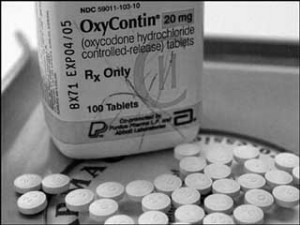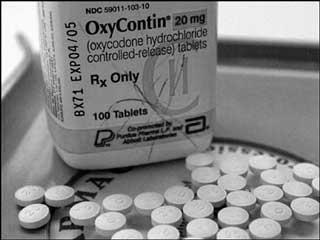 THUNDER BAY – Health – Oxycontin abuse is a northern problem. Solving the problem engages law enforcement, the courts, addiction treatment, and requires building solid support networks.
THUNDER BAY – Health – Oxycontin abuse is a northern problem. Solving the problem engages law enforcement, the courts, addiction treatment, and requires building solid support networks.
One of the tools used is methadone. “A temporary solution to a seemingly permanent problem is not the way to handle this”, says Addiction Canada Counselor Scott, “We deal with this temporary fix addiction by permanently solving the problem and complete recovery is the way to do it, and that’s what Addiction Canada provides, a permanent solution”.
Oxycontin: A social, legal and social problem
Across Northwestern Ontario, police are arresting people for selling oxycontin, a very addictive pain-killer, that many people end up abusing. Police have stated that the line of drug dealers shipping oxycontin into our region reaches from the north to gangs in major centres in southern Ontario.
The cost in damage to families is huge. So too are the financial impact of oxycontin. The Nishnawbe-Aski Nation (NAN) has been steadfast in seeking to solve the problems the drug creates. “NAN has been steadfast in our attempt to secure the support and resources we require to help our communities from an unwavering federal government who has been largely unresponsive to our appeals for help,” stated Alvinn Fiddler, the NAN Deputy Grand Chief. “Nonetheless, our First Nations have not sat idly by; rather, many have pulled together all of the resources they have in order to try provide detoxification and treatment options for those affected by this addiction.”
Local Problem – Distant Solution
The Northern Ontario, one of the problems facing those seeking treatment is a lack of treatment facilities. Often those seeking treatment are shipped off to North Bay, or Sudbury. While that might help, part of the problem is that leaves the person, once treatment is completed without the network or fast access to the counselor who helped them through the initial treatment program.
[sws_pullquote_right]”For many members of NAN First Nations, this is a matter of life or death” – NAN Grand Chief Harvey Yesno [/sws_pullquote_right] Even in the area of detox treatment there is a huge shortage of facilities in Northwestern Ontario.
It is an area the City of Thunder Bay, and the Province of Ontario seem aware of but have not demonstrated a lot of action toward solving.
Oxycontin to Methadone
Methadone is a synthetic narcotic pain reliever with effects similar to morphine. “Methadone is used to help reduce the withdrawal symptoms in people addicted to heroin and other narcotic drugs without producing the “high” associated with those narcotics but its still an addiction”, says John Haines Director of Addiction Canada. He further states, “But methadone is still a narcotic, and it is addicting. Granted, it is less addicting than heroin or other opioids, but addiction is addiction. Why substitute one addictive substance for another?”
For those individuals addicted to heroin or other opioid, such as OxyContin, the common treatment is shifting users to methadone. “For many persons seeking to come off heroin or OxyContin addiction, going to methadone may seem like a no-brainer”, according to Addictions Canada. Tapering off and gradually reducing the dosage of methadone is one way of kicking the heroin habit. Another use for methadone is as daily maintenance.
Why would someone choose methadone maintenance? Using methadone in this manner allows the addict to try to rebuild parts of their lives that have been damaged by heroin addiction. It’s not a perfect solution, but it can be useful as a temporary one.
Treatment for opioid addiction usually includes a period of detoxification (also called detox), followed by counseling and therapy that are designed to help the patient stay off the drug. There are also specific therapies that are used based on the individual and their individual program of recovery that may include, traditional Aboriginal medicine, Chinese medicine, hydrotherapy, mindfulness meditation and spiritual counseling, restorative yoga, nutritional wellness, massage therapy and dry sauna.
The fact that many opioid-dependent individuals also have other substance abuse problems, specifically alcohol abuse or addiction, and/or use of cocaine or other illicit substances, along with possible co-occurring mental health disorders (including depression, anxiety, bipolar disorder and others), means that it may take longer for the comprehensive treatment to begin to work effectively.
While the path toward recovery from opioid addiction may seem uncertain, with relapse rates high and multiple stays in rehab often required, the outcome is not negative. Indeed, with each treatment stay completed, patients do seem to make progress, according to numerous research studies.
With focus on solutions, co-operation between all four levels of governments; federal, provincial, Aboriginal, and civic, there are likely solutions that will work.







